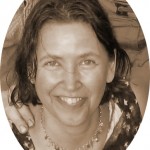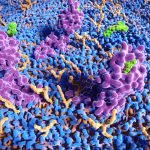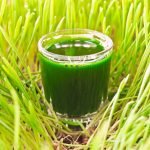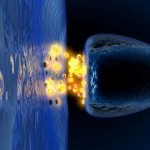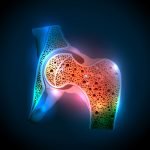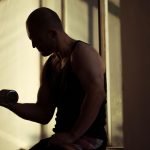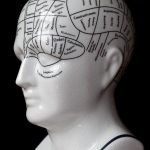Medical Freedom: Part 2
Sussanna C. Czeranko, ND, BBE
For 30 years we have looked on; we have expected help from the Legislatures, the Federal Government, the administration of the cities in which we live, from the common sense of the American people and nothing good has been done for us. Persecution, jail, heavy fines, ridicule, condemnation by the subsidized press, has been our lot.
Benedict Lust, 1922, p. 180
The citizens of this country should be free to choose their own physicians. This inalienable right should not be questioned at any time by anyone.
Bernarr MacFadden, 1929, p. 42
Medical freedom has been on the lips of NDs from the very beginning. Lust was quite familiar with the “persecution, jail, heavy fines, ridicule” (1922, p. 180) that early NDs faced. He would often be notified that one of his colleagues was in jail and post bail on their behalf. Just now, as we sit comfortably thinking that all this is behind us and that we have come a long way, we are reminded once again, as if for the first time, that it is right in front of us. The issue of “medical freedom” today is as serious and dangerous to our profession in 2012 as it was in 1912. At this very moment, for example, the American Medical Association attacks our efforts in Iowa and Maryland to bring forward regulating legislation for naturopathic medicine. At this very moment, “our colleagues practicing in Quebec are constantly under the threat of being charged of the illegal practice of medicine” (O’Reilly, 2012). One such physician who is a graduate of the National College of Natural Medicine (Portland, Ore.) is faced with this reality.
Despite the iatrogenic carnage in North America that numbers in the hundreds of thousands, a single event pointed at an ND makes headlines even in 2012. Last month, we discussed the alarming proliferation of iatrogenic diseases and deaths in North America. Yet, despite the millions who
die due to allopathic medicine, no one notices. When 4 commercial jets crashed
on September 11, 2001, the whole world took notice. Yet, would the media notice
“if SIX jumbo jets [were to crash] every day in the USA, claiming the lives of 783,936 people every year?” (Fraser, 2012). Would governments notice? Would we notice?
Because of their positioning at the apex of the dominative orthodox biomedical system (Baer, 2002), allopaths are for all intents and purposes not accountable for so much of the tragedy and death caused by their mistakes.We are foolish to think that we have medical freedom in North America.
The principal difference is that today the biomedicine industry is fully assimilated into every fabric of civil, national, regional, higher education, public health, and research sector in the land. Back in Lust’s time, the allopaths were busy aggressively invading all those corners of society that they now dominate. Although entrenched today, they are not unimpeachable, and they know they are no longer the only show in town. A second difference is that we now have more proven professional formation tools in hand. For example, NDs now use the same language, can bring forward relevant and recognized data, have an excellent unassailable public record of effectiveness and safety, and know how to professionally communicate the validity of our training and credentialing for the scope being sought. A third difference is that we can bring along highly credible third-party support now, chief among them patients who are better informed than ever about the so-called alternative and complementary or integrative medicine they are choosing by the millions.
Incremental to our patient record, we have with us now higher education accreditors who derive their authority from the same Department of Education affiliations as the allopathic schools. As well, we have significant state legislation, with varying scopes, from almost a third of the U.S. states and over half of the Canadian provinces. We have then the cumulative record of a century to proclaim our professional status. We can verify and celebrate the effectiveness of not only our noninvasive, natural, traditional, safe therapies (such as water, air, dietary counsel, and exercise) but also our contemporary accomplishments and approaches, including numerous National Institutes of Health grants, which assure safety and relevance in an age of serious and mounting chronicity issues. Our adversaries and detractors face a naturopathic profession with a track record to contend with.
The early literature of our profession characterized these adversaries, whom they called the medical trust, as “medical pirates.” One ND said of them publicly that they were “the most heartless autocracy that was ever inaugurated in the United States or in the old world. It is as insidious as it is dangerous and knows no bounds” (Robinson, 1908, p. 89). The literature of the period stated too that the medical trust had its hooks in every county in America: “This gigantic trust has representatives in 900 counties throughout the United States” (Robinson, 1910, p. 555), which successfully established the infrastructure accompanied by the appropriate bodies to form “a legalized monopoly” (Conrad, 1912, p. 235).
How did they manage to mobilize such a comprehensive takeover of the American healthcare? For a start, the literature shows how early 20th century MDs collaborated nationally and regionally. They organized their effort county by county to raise the funds to facilitate bills through lobby efforts, public education, and political sponsorships. Commentators from the time understood the laws passed by the medical trust to be primarily “the means of increasing the incomes of the medical doctors” (MacFadden, 1929, p. 42). However, deeper analysis of the historical record shows that the allopaths were positioning themselves not only to ramp up many fold their incomes but also to run U.S. health policy and practice forever. It did not escape the NDs (even 1 year after the Flexner report) that “the American Medical Association [were] in the course of years develop[ing] into a political machine, simply for the purpose of bringing about legislation that [would] place it in absolute control of the nation’s medical practice” (Robinson, 1911, p. 106). The political process that resulted with the National Bureau of Health in place as a vehicle for the American Medical Association to do its work was beset with unanswered questions, but still they prevailed. Lust and others asked from the sidelines: “Do these laws create fat offices and big [salaries]? Do they give leadership to a few political doctors? Do these laws enable the trust to dominate the rest of the profession and all the people of the United States?” (Lust, 1912, p. 228).
Early on, as these politically authenticated medical privileges were being solidified, the early NDs knew how hard it would be to claw back a place for naturopathic medicine in the medical hierarchy in the United States. Thus, pelf, power, and greed, coupled with the long-term political positioning of the biomedicine profession as the motives of the medical trust, were not lost on the early NDs. Erz challenged the injustice repeatedly in his writings: “Official medicine has been getting too much protection and has been given too much power and too many privileges, without rendering efficient service” (1913, p. 445). The NDs criticized loudly the greed of the allopaths. In 1907, in the town of Williamsport, Pa., for example, physicians raised their medical fees from 50% to 100%, and the town reacted with outrage and protests: “The doctors for a five minute call, and for even less time, take what most men work a whole day for” (Erieg, 1908, p. 15). These numbers are still relevant in 2012, as more than 50 million Americans do not have the financial means to afford simple surgical procedures and medical care, and medical specialists generate in minutes what the average worker may take a large part of a day to earn. Nevertheless, the American Medical Association continued its county-by-county denunciation of naturopathic medicine, insisting that the drugless therapies of the NDs were dangerous.
Responding to the allegation that drugless treatment is dangerous, the NDs countered with a question that proved to be rhetorical in legislature after legislature because it went unanswered: if drugless treatments were so dangerous, why did the statistics not support the allopathic arguments that claimed they were? Goodfellow presented statistics of another sort:
The official statistics of the health department of New York City show that only one child died in New York of diphtheria in 13 years, under drugless treatment, and that 1,715 died of the same disease in one year—1911—in that city, under regular medical treatment. While two patients died of scarlet fever in 13 years in the entire United States, under a drugless treatment, 953 died of that same disease in New York alone, in one year—1911—under orthodox medical treatment. (1913, p. 4)
Another example of the rising disparity of results between the MDs and the NDs was the Spanish flu of 1918: “The death rate under drugless treatment was less than one per cent” (Lust, 1919, p. 478). Lust hoped that “Congress will conduct an honest investigation and publish an unbiased report so that it will be unnecessary to sacrifice 400,000 more lives to medical inefficiency, should the epidemic recur this winter” (1919, p. 478). Lust believed that the people had a right to know what worked for the Spanish flu.
It did not make sense to the NDs of the early 20th century that the biomedicine hegemony responsible for tragic loss of life could gain such credibility and dominance within the political arena. Goodfellow asked loudly at the time: “Is it unreasonable to give any one school of healing a monopoly of the sick bed, because its doctrines and treatments are called orthodox or regular?” (1913, p. 4).
Healing and the health of people were central to the naturopathic mission, Robinson declared; he added: “It should not be a question of method or system as the regulars would have us believe, but his ability to heal the sick” (1909, p. 116).
These same early NDs, though, felt a moral obligation to pursue their system of medicine, despite the oppression and suppression instituted by the medical trust. Lust, who was at the helm for more than 50 years, saw and reported much. “Naturopaths have fought this menace for more than four decades,” he wrote in the late 1930s; “They have been arrested, fined and jailed like common criminals—their property confiscated and some of them have lost that most precious heritage, their citizenship” (Lust, 1937, p. 322). Meanwhile, dozens of eclectic, homeopathic, and even chiropractic and osteopathic medical schools relented, either to close forever or (as in the case of the osteopathic profession) to be assimilated into the dominant model. Again, Lust commented:
The slaves of this Trust, such as other medical schools who foolishly, by ill considered legislation, have sold their birthright, like the Homeopaths, the Eclectics—and the two drugless schools, the Osteopathic and the chiropractic, who have also sold their identity in many States to this soulless idol and false god, the American Medical Association. (1922, p. 180)
Important to note is that the NDs of the time were not just shocked by the overrunning of their schools and practices by the allopaths, but physicians like William Havard saw an even more sinister philosophical and ethical consideration. He considered that the federal and state governments that enabled the allopathic dominance were acting not only paternalistically but also despotically. In his and others’ views at the time, “compulsory medical treatment of whatever kind is an example of paternalism . . . and have robbed the individual of his freedom of choice in a matter which may mean life or death to him” (Havard, 1918, p. 916). Responsibility of the individual went to the state, and this lack of freedom was deeply objected to by the NDs and has been ever since.
As is the case today, it was true 100 years ago that naturopathic medicine was less expensive, preventive in nature and execution, and seemingly more effective. While NDs faced ridicule, sanction, and even prison, MDs grew more prosperous. Erieg questioned such motives: “The doctor should not enter his profession with the object of getting rich . . . he should enter the profession for the love of humanity, to save life and alleviate suffering” (1908, p. 15). Today, the cost of medical service is very high. An illustrative example is cataract correction, one of the most common surgical procedures in America. Each surgery averages about $3,279 per eye for the basic procedure. However, if one wants the premium version (i.e., the most current high-tech procedure), the cost elevates to $4,461 per eye (Haddrill, 2012). Projecting such numbers, the $4,500 to $9,000 fee for a 2-hour surgical procedure means that few Americans, professionals included, can expect to reach or sustain the earnings of an ophthalmologist. Not just NDs are puzzled about how to rationalize a medical system that generates per hour and per diem costs that are astronomically out of balance with other sectors of the service economy. So too are patients, some insurance reformers, and an increasing number of politicians. This issue was as critical a century ago as it is now:
The Commissioner of Health of the State of Michigan, Dr. Guy L Kiefer, points out that at $50.00 per case the physician could only expect to receive approximately $250,000.00 by treating cases of diphtheria but if the physicians were to inoculate all the children in the state against diphtheria and if they were to charge a fee of from $5.00 to $10.00 per child the net income to physicians would be from $500,000.00 to $1,000,000.00. He also points out that the 500 cases of smallpox that occur every year, if treated at an average of $50.00 per case, would only bring the physicians a total of $25,000.00, whereas if the 100,000 infants born each year in Michigan were vaccinated against smallpox at birth the income to the physicians would approximate $200,000.00. (Anderson, 1937, p. 61)
Responding to the alarm about exponentially rising healthcare costs a century ago, generated by new therapies and public health pronouncements by the medical trust, the early NDs repeatedly asked the parallel question about freedom of choice in healthcare. Blumer demanded, “Haven’t we a right, as citizens of the United States, to demand equal right and liberty to all?” (1910, p. 198). To iterate Havard, “Our liberty, our freedom, has been stolen while we slept and it is time the American people reclaimed their rights” (1919, p. 164). Fritz addressed the same question from a political perspective. He wrote, referring to the medical trust, that rather than “advance the art of healing, [the] prejudice and bigotry [of the medical trust] have condemned our system of drugless healing without a hearing” (Fritz, 1916, p. 161). To this argument, Robinson added: “It is no longer a question of ability to relieve suffering humanity but a question of authority and prestige” (1909, p. 116).
The global context of medicine was as opaque a century ago as it is today. So many countries have systems and policies that are unlike those of the United States. When the early NDs considered their plight, it was oppressive and unfair in their experience, especially when “in Germany, where the Nature Cure has been extensively practiced for half a century, [there were] many large establishments, which are freely patronized by physicians of all schools” (Schultz, 1908, p. 342). The early 20th century NDs knew that their counterparts in Europe collaborated strongly with their allopathic counterparts and still do today. They knew that MD balneotherapists were thriving in clinics set in hospitals, medical spa facilities, and private offices, working as traditional naturopaths using hydrotherapy and peloid therapies. These facilities and modalities are widely and strongly supported to this day. Unfortunately, the literature of the period shows that in America the drugless therapists were not united in their fight against the actions of the medical trust, and many of these European traditions were dismantled in America. Just after World War I finally abated, Diana Belais cajoled her colleagues to choose cooperation instead of confrontation. She wrote:
The American Medical Association exemplify the power of co-operation. All its tributary organizations—Red Cross, etc.,—are whipped into line and exhibit superb team work; whereas our ‘pathies’ appear totally oblivious to the object lesson offered by their oppressors, and to the truth containing the old phrase of wisdom: ‘In Union there is Strength’. (Belais, 1921, p. 126)
Some months later, Lust reiterated these sentiments:
In union is strength; in union we can break all the unconstitutional laws on the statute books in every state of the union . . . in union we can refuse submission to a mixed medical and osteopathic board, from whom we have never received a square deal in the past, now nor will get it in the future; in union we can demand recognition for our schools and for our successful practice. (1922, p. 181)
Thus, one can see from the literature that NDs understood well the implications of the truncating of their professional formation. It was not just a matter of earning a living; it had to do with an entire medical system being assaulted and invalidated. However, the question of medical freedom, which makes as much sense today as then, generated a different outcome for NDs. Lust weighed in on this question at the end of the war. He wrote: “At present, the drugless profession in America is not yet well organized. There are some sincere men and women with the right idea, but the larger part of the profession does not pull together. There is too much sectarianism” (Lust, 1918, p. 718).
Meanwhile, as the drugless practitioners faced segmentation and fragmentation in their own ranks, the allopaths were broadcasting their message on the radio waves loudly, clearly, and often. Anderson wrote 2 decades later:
The US Public Health Service send out a weekly or bi-weekly story over the radio. This is sent to 48 radio stations and is translated into 16 different languages and sent to newspapers in the US and abroad, having a potential circulation of 25 million readers. This is only one of the many avenues available to organized physicians domination public health work for carrying on medical propaganda. (1937, p. 60)
The record of these decades points out how quickly the early allopaths instituted restrictive measures preventing the drugless practitioners from practicing. However, our forebears soon urged their own colleagues and friends to fight at the ballot box: “Voters should be careful whom they support for legislative positions . . .
and support only those candidates for office who are friends of medical freedom” (Erz, 1912, p. 708). However, even this political sensibility needed to be backed by organized and sustained effort and not diluted by fractionalism. Very soon after the Flexner report and after institution of the General Education Fund that financed biomedical education so rapidly in universities all across America, the MDs had already infiltrated the highest levels of government and positions of authority.
The legacy of this period is still with us. By 1997, for example, federal data demonstrate that approximately 17 million hospitalizations were completely unnecessary and that 13 million procedures were completely uncalled for and unneeded. Atkinson (2011) contends that every day 50,000 Americans receive medical treatments unnecessarily (the actual number quoted by Atkinson was 999,936 in 1997). The costs of these medical interventions, staggering and astronomical though they may be, reflect that destructive nature of a dominant allopathic medical system. Even though MDs sometimes provide inappropriate care and a million people face the possibility of an iatrogenic death, the lock that biomedicine has on systems, accountability, and political privilege means that such carelessness and incompetence are not addressed.
Allopathic medicine built its orthodox system on a scientific foundation. However, NDs a century ago and NDs today point out that the biomedicine system has morphed into a dice game. The objective of healthcare is affected dramatically by insurance revenue rules, by limited health choice access, and by a medical paradigm that has for decades not been consistently patient centered or philosophically sound. An indicated treatment may be compromised by economic and political issues. In the exposé by Schneiderman and Jecker on the futility of medicine and its practices, the authors urge physicians to pay more attention to the appropriateness of care, while “actively [engaging] in the discussion of how to approach medical futility” (Thompson, 2012, p. 515).
Nevertheless, the enthusiasm of someone like Dr C. Schultz, an ND who saw the gathering forces of the American Medical Association after their first survey of medical schools in 1905, was entirely optimistic. He assumed that the profession would rally together and offer a united front against the evolving medical trust. He wrote: “Whatever you do, the time will come when Naturopathy will rule in the world, not by force of Police or penal laws, but by virtue of its incomparable results in leading humanity to wisdom, health and longevity” (Schultz, 1905, p. 219). Another appeal came from Cordingley, claiming that “Naturopathy [is] the greatest healing art of all, because it takes from all whatever is good” (1923, p. 685). Cordingley insistently urged that the duty of every ND was to join his or her national association. He finished with a prophetic claim:
[T]en years from now we are going to see ‘Naturopath’ signs in every city of any importance in the United States, and the practitioner will be proud to be able to call himself a Naturopath, because it will mean that he is a member of the most progressive and most successful healing system in the world. (Cordingley, 1923, p. 686)
That vision is manifesting today. Our agencies, schools, and track record are strong. As ever, we must stand tall on the work of those who founded our medicine and not reinvent wheels or repeat mistakes.
Sussanna Czeranko, ND, BBE is the curator of the rare book collection at National College of Natural Medicine, in Portland, Oregon. She is currently compiling an 8-volume series on nature cure topics for the profession. She is also an adjunct faculty member of the Transformative Voice Institute in Portland, the founder of the Breathing Academy in Portland, and a founding board member of the Buteyko Breathing Educators Association. She is a licensed ND in Ontario, Canada, and in Oregon and is a graduate of Canadian College of Naturopathic Medicine, Toronto, Ontario. She has been in practice since 1994, incorporating nature cure modalities and tools into her practice with great success. Her Web site is www.breathingacademy.com.
References
Anderson, H. B. (1937). The menace of a medical monopoly. Naturopath and Herald of Health, 42(2), 60-62.
Atkinson, P. (2011). Table of iatrogenic deaths in the United States. Retrieved March 19, 2012, from http://www.ourcivilisation.com/index.htm
Baer, H.A. (2002). Biomedicine and Alternative Healing Systems in America: Issues of Class, Race, Ethnicity and Gender. University of Wisconsin Press. Madison, Wisconsin.
Belais, D. (1921). One for all and all for one. Herald of Health and Naturopath, 26(3), 125-126.
Blumer, L. (1910). The revolution in medical practice.
The Naturopath and the Herald of Health, 15(4), 195-210.
Conrad, C. F. (1912). Argument against medical legislation.
The Naturopath and the Herald of Health, 17(4), 234-238.
Cordingley, E. W. (1923). Let us standardize the practice of naturopathy. Herald of Health and the Naturopath, 28(11), 684-687.
Erieg, S. T. (1908). Doctors and their exorbitant fees. The Naturopath and Herald of Health, 9(1), 14-15.
Erz, A. A. (1912). Friends of medical freedom and voters, attention! The Naturopath and the Herald of Health, 17(11), 707-709.
Erz, A. A. (1913). Medical laws vs. human rights and constitution. The Naturopath and the Herald of Health, 18(7), 438-472.
Fraser, J. (Feb. 13, 2012). Medical terrorism hidden in plain sight. Retrieved March 19, 2012, from http://globalrumblings.blogspot.com/2012/02/medical-terrorism-hidden-in-plain-sight.html
Fritz, W. W. (1916). The history of the healing art in the progress of drugless therapy. Herald of Health and Naturopath, 21(3), 160-164.
Goodfellow, A. E. (1913). Medical letters. The Naturopath and the Herald of Health, 18(1), 3-6.
Haddrill, M. (2012). Cataract surgery cost. Retrieved March 19, 2012, from http://www.allaboutvision.com/conditions/cataract-surgery-cost.htm
Havard, W. F. (1918). Despotism and paternalism. Herald of Health and Naturopath, 23(12), 916.
Havard, W. F. (1919). For medical freedom. Herald of Health and Naturopath, 24(4), 164.
Lust, B. (1912). The regulars are regulators. The Naturopath and the Herald of Health, 17(4), 228-230.
Lust, B. (1918). Stenographic report of the 22nd Annual Convention of the American Naturopathic Association. Herald of Health and Naturopath, 23(8), 716-722.
Lust, B. (1919). Editorials: a chance for a hearing. Herald of Health and Naturopath, 24(10), 478.
Lust, B. (1922). An open letter by Dr. B. Lust to the drugless profession of the United States of America. Herald of Health and Naturopath, 27(4), 180-182.
Lust, B. (1937). Dr. Lust discusses: slow strangulation by the medical trust. Nature’s Path, 42(9), 322, 343.
MacFadden, B. (1929). Medical tyranny in New York. Nature’s Path, 33(2), 42.
O’Reilly, S. (2012). A telephone conversation with Shawn O’Reilly, the executive director and director of government relations, Canadian Association of Naturopathic Doctors. www.cand.com
Robinson, J. T. (1908). The medical trust in the United States. The Naturopath and the Herald of Health, 9(3), 89-92.
Robinson, J. T. (1909). A system of autocracies. The Naturopath and the Herald of Health, 14(2), 116-118.
Robinson, J. T. (1910). The National Bureau of Health. The Naturopath and the Herald of Health, 15(9), 555-556.
Robinson, J. T. (1911). Something far-reaching. The Naturopath and the Herald of Health, 16(2), 106-107.
Schultz, C. (1905). Naturopathy: what it is, what it does, and why it is opposed by the medical trust. The Naturopath and Herald of Health, 16(8), 216-219.
Schultz, C. (1908). An open letter to the public. The Naturopath and Herald of Health, 9(11), 342-343.
Thompson, A. (2012). Wrong Medicine: Doctors, Patients, and Futile Treatment [review of book by Lawrence J. Schneiderman and Nancy S. Jecker]. JAMA, 307(5), 514-515.


